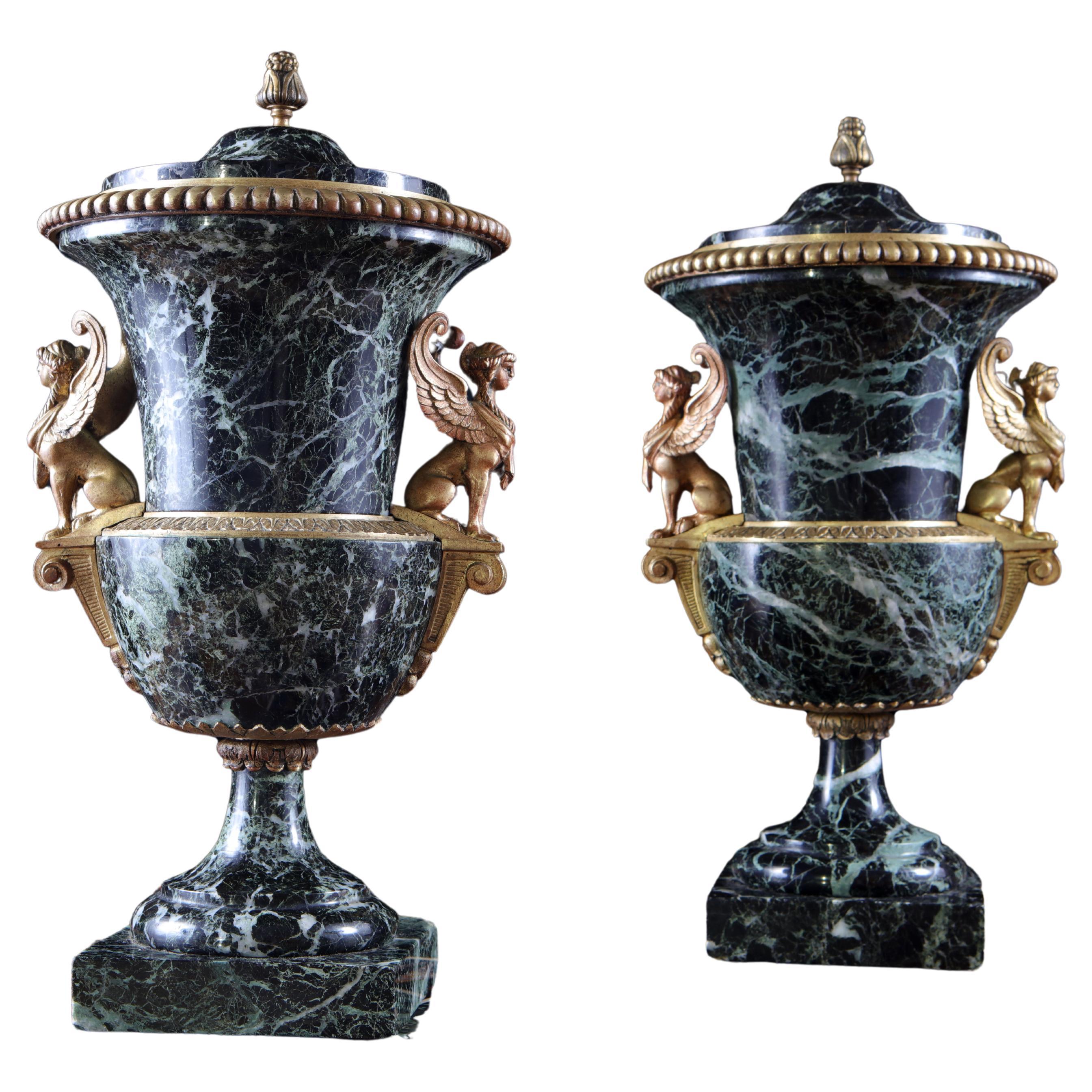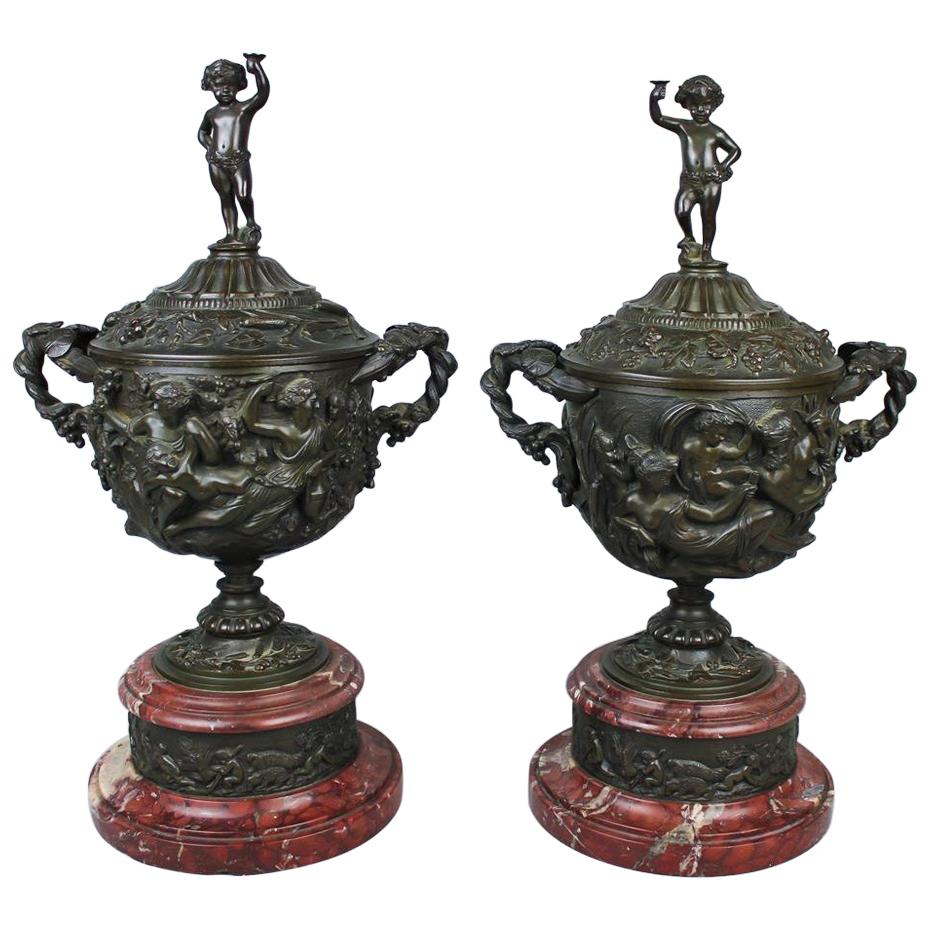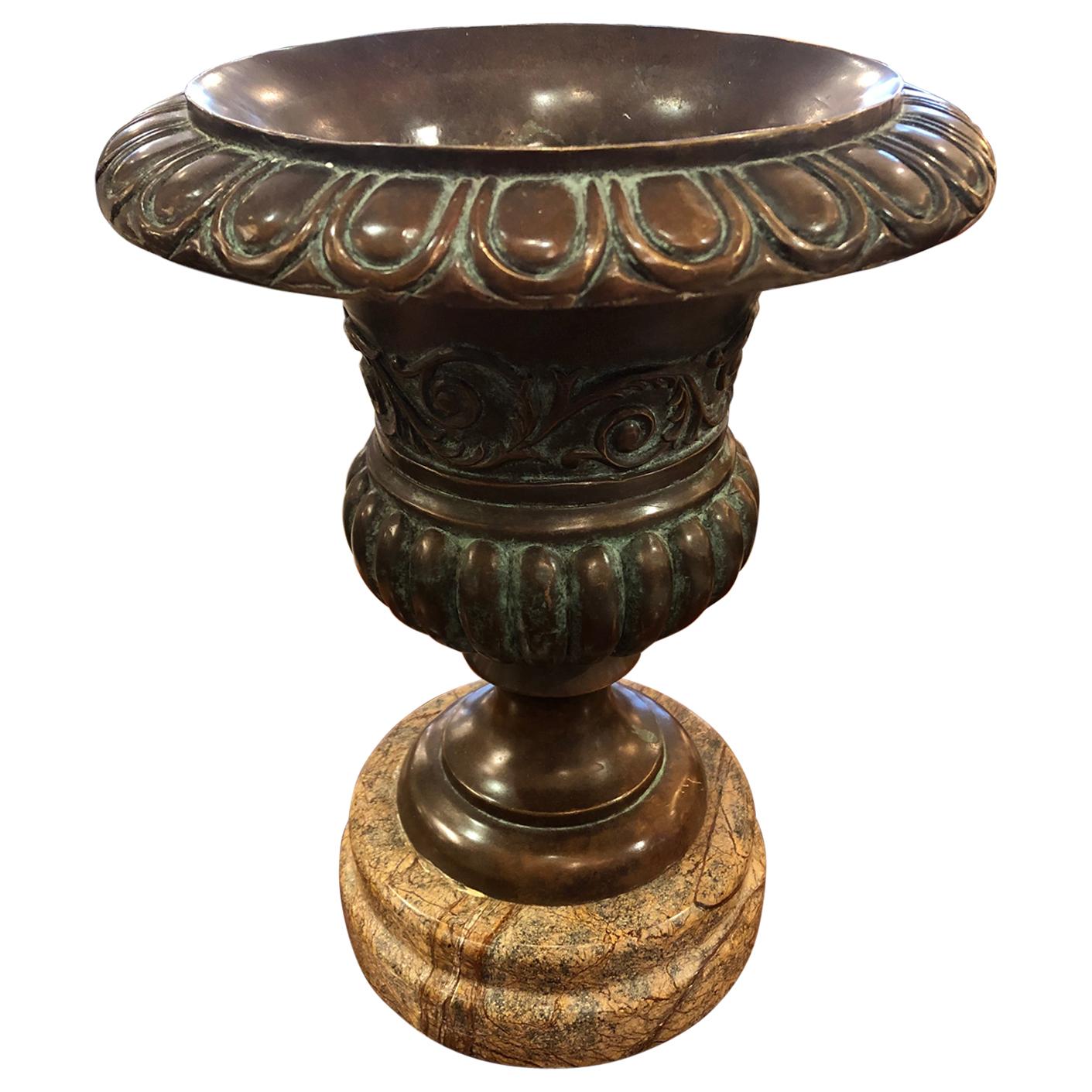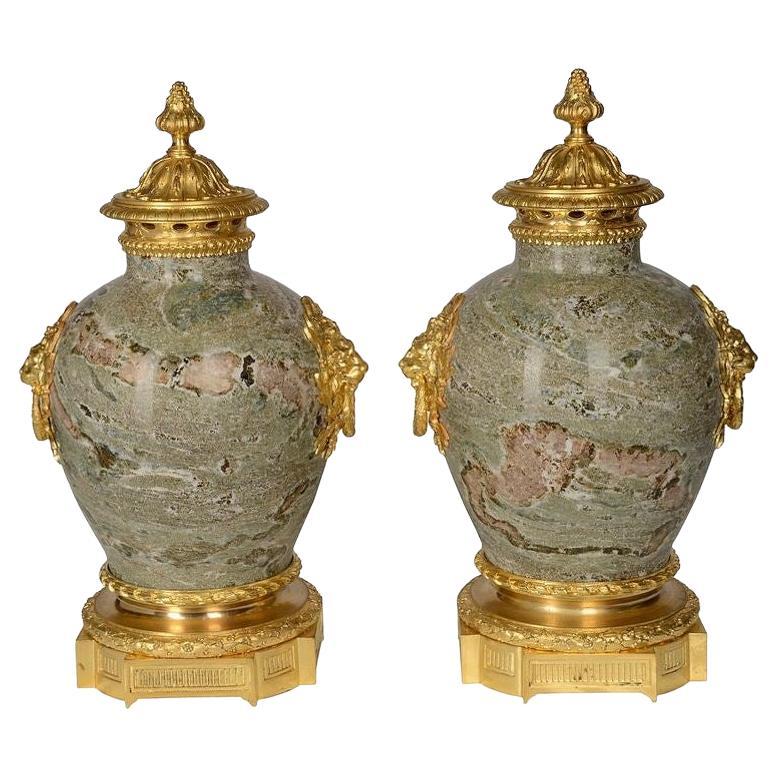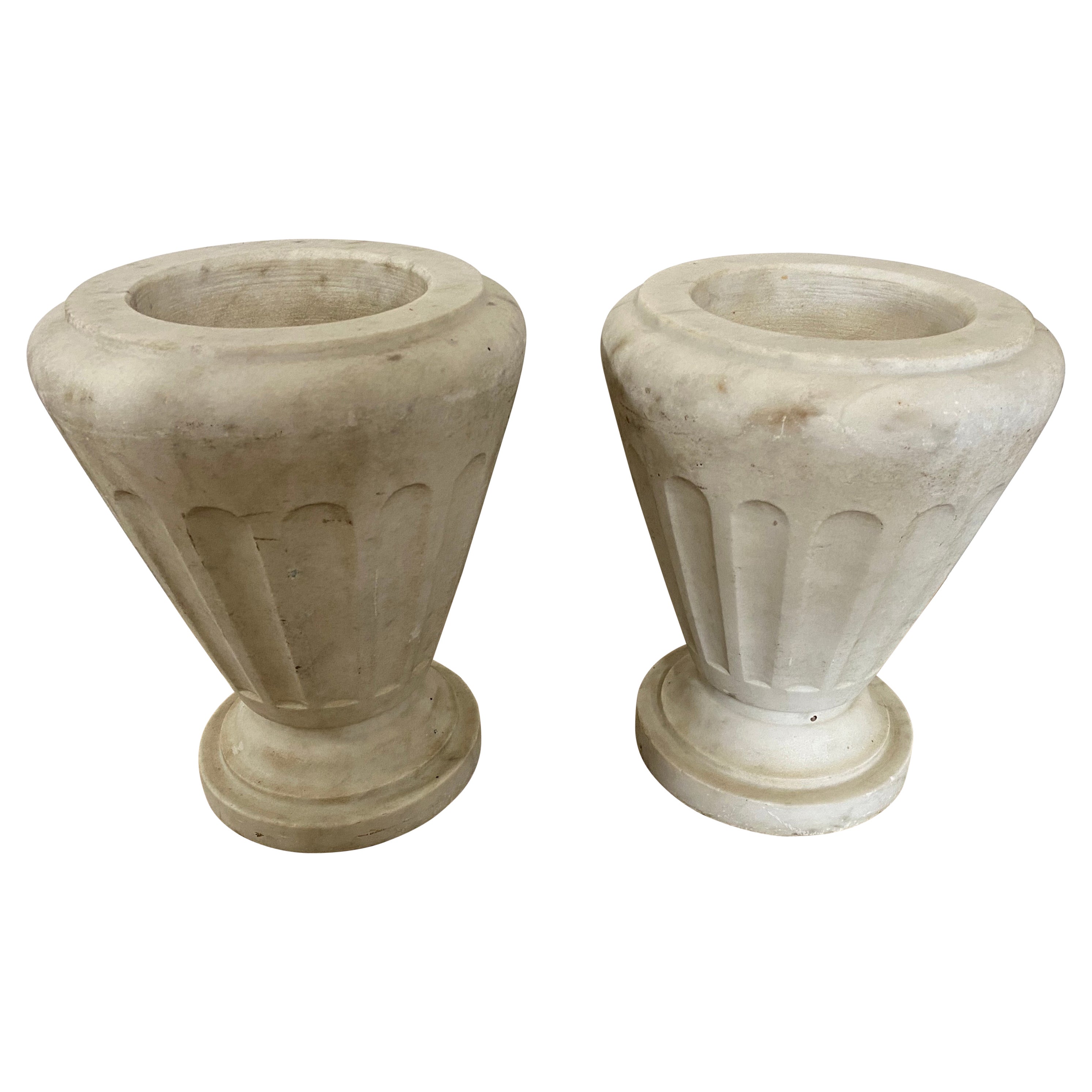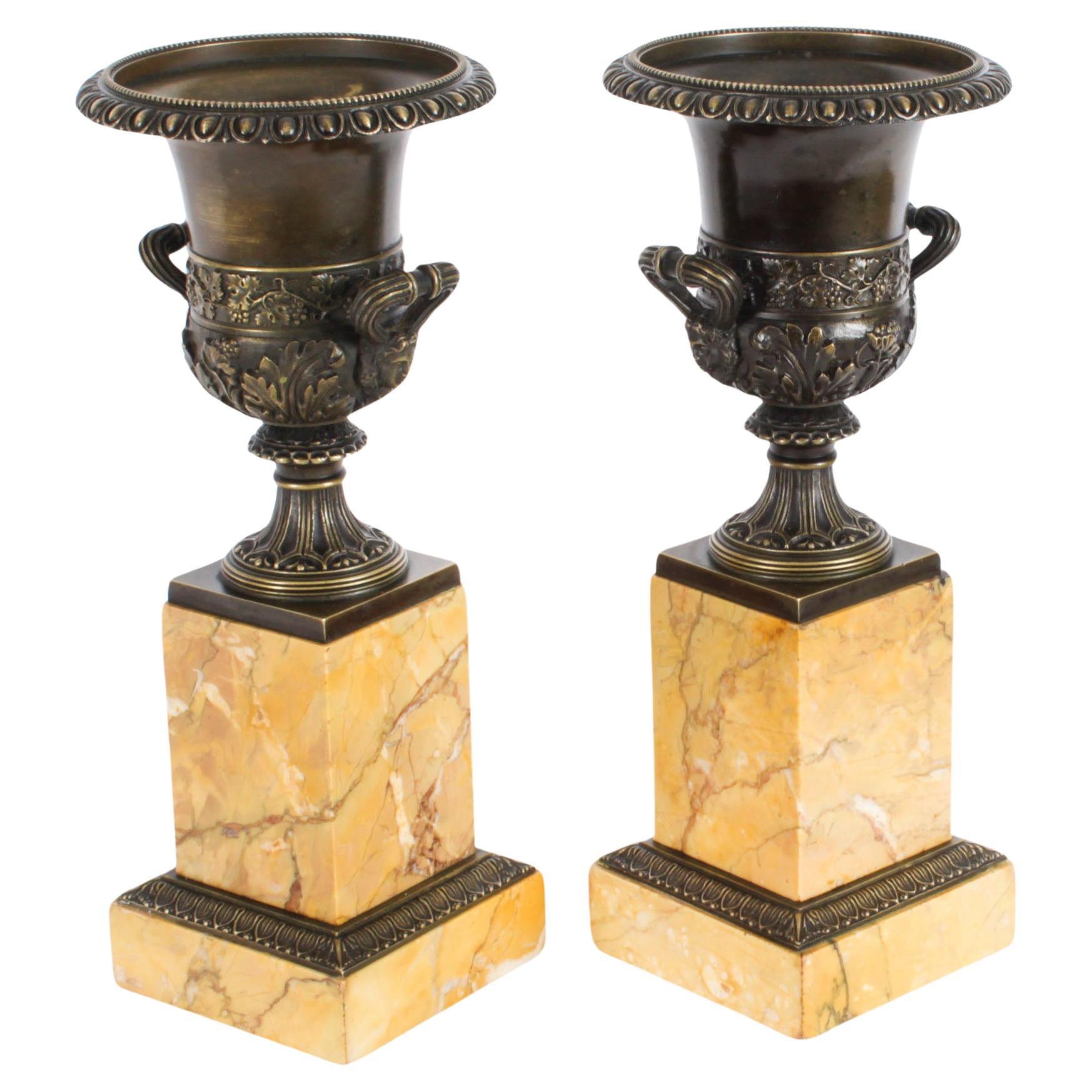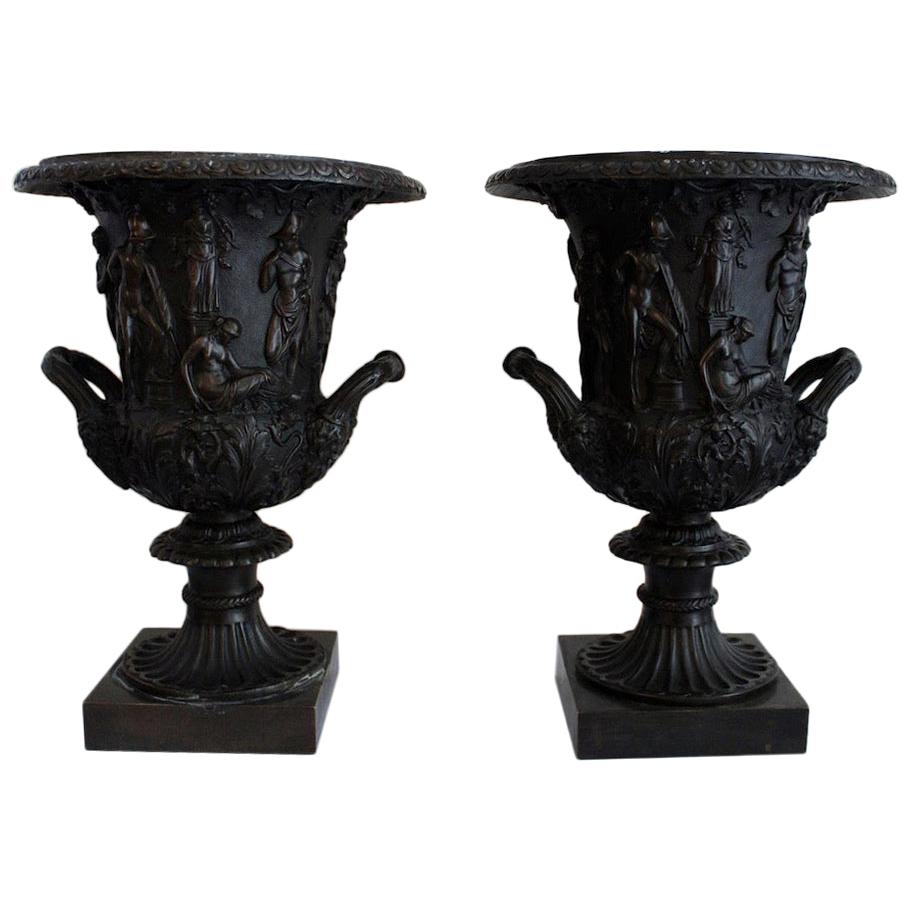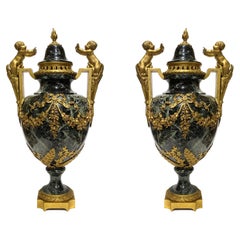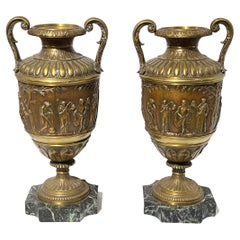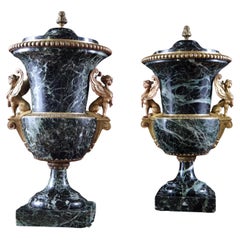
Pair of Palatial Classical Bronze and Siena Marble Urns
View Similar Items
Want more images or videos?
Request additional images or videos from the seller
1 of 12
Pair of Palatial Classical Bronze and Siena Marble Urns
About the Item
- Dimensions:Height: 40 in (101.6 cm)Width: 26.5 in (67.31 cm)Depth: 20 in (50.8 cm)
- Sold As:Set of 2
- Style:Louis XVI (In the Style Of)
- Materials and Techniques:
- Place of Origin:
- Period:
- Date of Manufacture:20th Century
- Condition:Wear consistent with age and use. There are some minor natural cracks that appear in the marble.
- Seller Location:New York, NY
- Reference Number:1stDibs: LU881915624842
About the Seller
4.8
Vetted Seller
These experienced sellers undergo a comprehensive evaluation by our team of in-house experts.
Established in 1890
1stDibs seller since 2009
192 sales on 1stDibs
Typical response time: 5 hours
More From This SellerView All
- Pair of 19 Century French Louis XVI Style Gilt Bronzed Mounted Marble UrnsLocated in New York, NYPair of large and very fine quality 19 century French Louis XVI style gilt bronzed mounted cherub motif Marble Urns.Category
Antique Late 19th Century French Louis XVI Urns
MaterialsMarble, Bronze
- Pair of Bronze and Marble Neoclassical PitchersLocated in New York, NYPair of Bronze and Marble Neoclassical Pitchers Stock Number: DA164Category
Antique 19th Century French Urns
MaterialsBronze
$3,250 / set - Pair of French 19 century Neoclassical Style Bronze and Marble VasesLocated in New York, NYPair of antique (19th century) bronze urns in the Greco-Roman style with frieze decorated with procession of classical figures, mounted on marble bases.Category
Antique Late 19th Century French Louis XVI Vases
MaterialsMarble, Bronze
- Pair of Large Louis XVI Style Cobalt Blue Sevres Bronze Mounted UrnsLocated in New York, NYPair of finest quality and palatial cobalt blue Sevres porcelain bronze mounted urns with ram's head motifs.Category
Antique 1880s Louis XVI Urns
MaterialsBronze
- Pair of Neoclassical Campana Form Marble Urns on PedestalsLocated in New York, NYPair of neoclassical Campana form marble urns on pedestal. Stock number: DA31.Category
Antique Late 19th Century Italian Urns
- Pair Monumental Neoclassical Carved White Marble UrnsLocated in New York, NYPair of finest quality Monumental 19 century Italian Neoclassical Carved White Marble Urns.Category
Antique Late 19th Century Italian Urns
MaterialsMarble
You May Also Like
- Pair of Antique Neoclassical Siena Marble Urns with Gilt Bronze MountsLocated in Richmond, LondonA superbly decorative pair of neoclassical Siena marble urns, with ornate gilt bronze mounts. French, late 19th - early 20th century. We love the colour and scale of these splendid...Category
Early 20th Century French Neoclassical Revival Urns
MaterialsMarble, Bronze
- Pair Of Marble And Ormolu Classical UrnsLocated in Reepham, GBPair of Campagna form green marble urns with lids, mounted with ormolu bronzes of Egyptian inspired sphinxes.Category
Antique 19th Century Urns
MaterialsMarble
- Pair 19th Century Classical marble and ormolu urns.Located in Brighton, SussexPair of Classical 19th Century French Louis XVI style marble and gilded ormolu lidded urns. Each with swan head handles and floral swag decoration, raised on plinth bases. Batch 75 ...Category
Antique Late 19th Century French Louis XVI Urns
MaterialsMarble, Ormolu
- Pair of Patinated Bronze and Marble UrnsBy Claude Michel ClodionLocated in Brighton, West SussexA fine pair of patinated bronze and rouge griotte marble urns and covers, in the manner of Clodion. Of fine patina each urn has an ovoid shaped body cast in high relief with vine ...Category
Antique 19th Century French Urns
MaterialsGriotte Marble, Bronze
- Magnificent Classical Bronze Urn on Marble StandLocated in Hopewell, NJLuscious bronze urn on marble base having classical decoration and warm patina.Category
Vintage 1950s French Neoclassical Urns
MaterialsMarble, Bronze
- French Siena Marble Tazza Urns Charles XLocated in Newark, EnglandApplied Lyre Decoration The pair stood upon four cast Bronze feet with a pedestal Siena Marble foot with an applied bronze scrollwork border. The central square column with a bronze Swan neck lyre harp bordered by floral swags to the front of the vase. The base of each Tazza Urn cast in Bronze with Ram’s head twin loop handles and a floral band surmounted by a tapered Siena Marble Core finished with a Bronze liner. The Tazza Urns dating to the first half of the 19th century during the latter reign of Charles X circa 1830. Bronze an alloy consisting primarily of copper with approximately 12–12.5% tin and often with the addition of other metals (including aluminium, manganese, nickel, or zinc) and sometimes non-metals, such as phosphorus, or metalloids such as arsenic or silicon depending on the age of the bronze and its origin. The additions of other metals produce a range of alloys that are usually harder than copper alone and carry useful properties such as strength. The earliest known use of bronze dates to the 5th millennium BCE from Iranian plateau, the bronze mix consists of arsenical copper and copper-arsenide. The earliest tin-copper-alloy recovered is dated to circa 4650 BCE and was found in Plocnik, Serbia. It is believed to have been smelted from a natural tin-copper ore. Sienna Marble consists of various dark yellow and gold colours, it is extremely heterogeneous due to the presence of grains with shades ranging from ivory white to light yellow to a reddish yellow ocher and is usually an intense marble. Lyre a stringed musical instrument part of the lute-family and consists of two arms and a crossbar with strings. The Lyre has featured on classical objects like the pair of vases above for thousands of years. They were commonly used in several ancient cultures surrounding the Mediterranean Sea. The earliest known examples of the lyre have been recovered at archaeological sites that date to c. 2700 BCE in Mesopotamia. Charles X (Charles Philippe 1757-1836) was the King of France during a short reign between 1824 to 1830. He was the uncle of the uncrowned Louis XVII and younger brother to reigning kings Louis XVI and Louis XVIII, he supported the latter in exile. After the Bourbon Restoration in 1814, Charles (as heir-presumptive) became the leader of the ultra-royalists which was a radical monarchist faction within the French court. The ultra-royalists declared absolute monarchy by divine right and opposed the constitutional monarchy concessions towards liberals and the guarantees of civil liberties granted by the Charter of 1814. Charles gained...Category
Antique Early 19th Century French Charles X Urns
MaterialsMarble, Siena Marble, Metal, Bronze
Recently Viewed
View AllMore Ways To Browse
Sienna Vases
Garland Planter
Pair Marble Planters
Sienna Marble Urns
Bronze Urn Planters
Vintage Figural Planters
Gold Rimmed Planter
Marble Urn Planters
Palatial Vases
Pair Siena Marble Vases
Pair Of Figural Jardinieres
Decorative Plant Stand
Blue Jardiniere Vase
Cachepot Pair
Pair Cachepots
Pairs Of Cachepots
Antique Chinese Planters
Antique Chinese Planter

